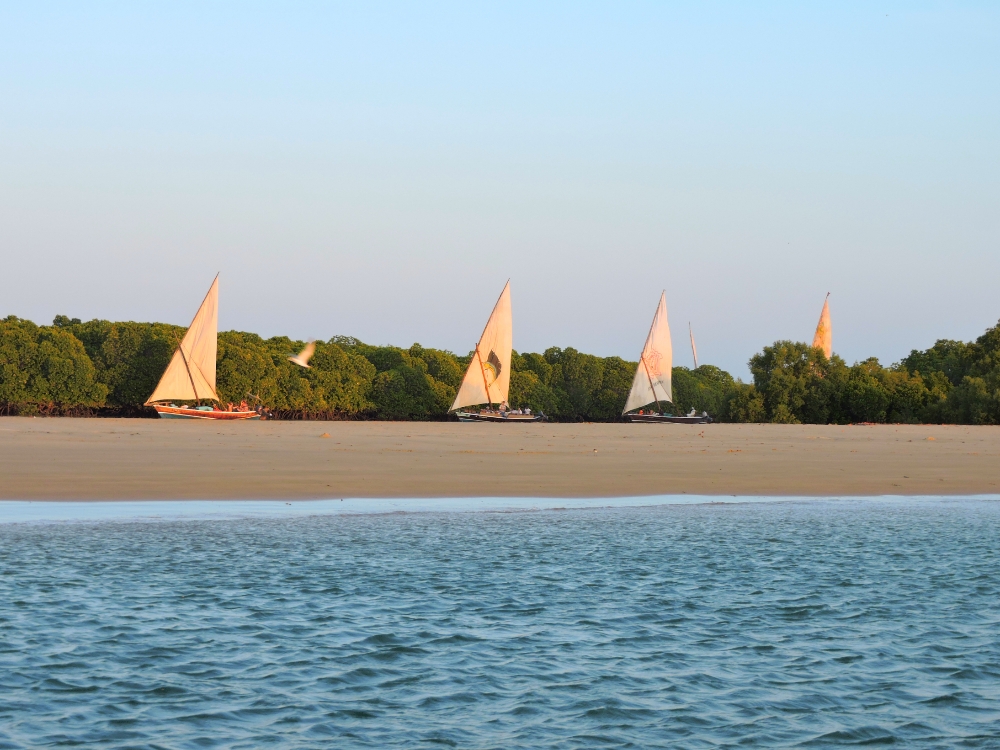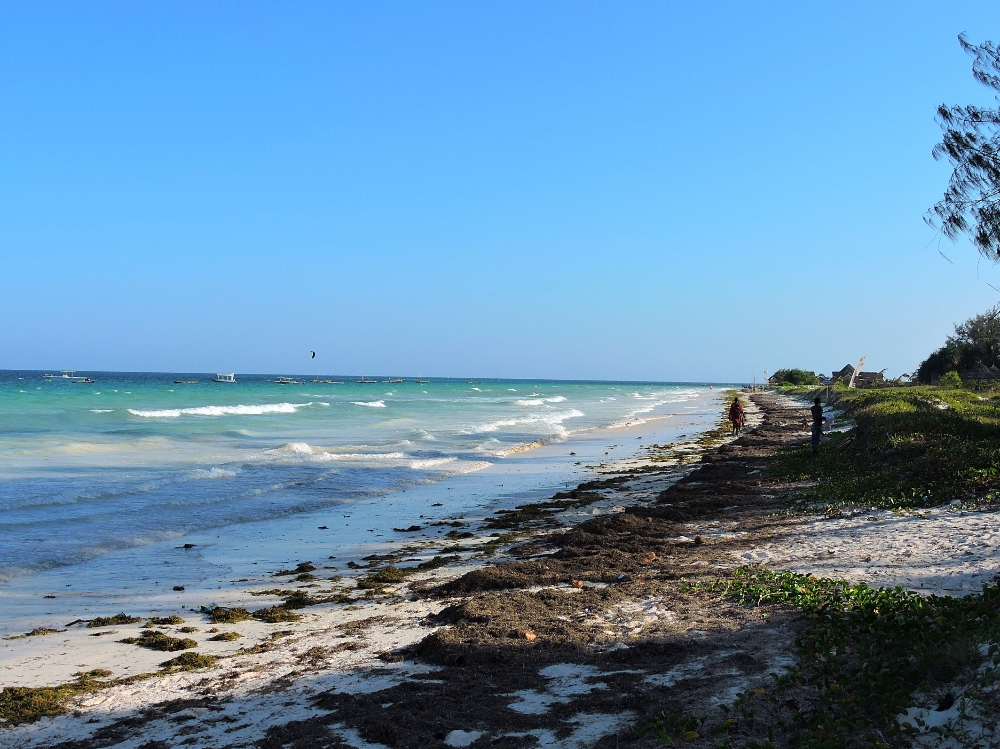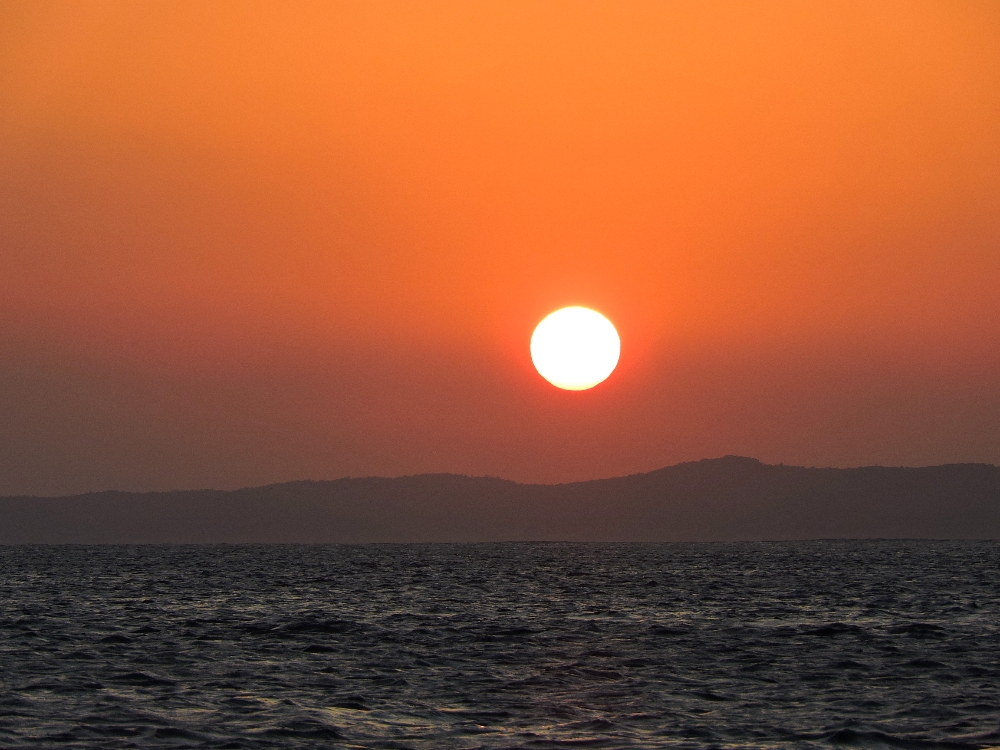Prior to the month of February, 2021, the World2 Tour had brought me to twenty-five countries and, of those, only three were nations where I had previously done any significant amount of touring. Normally, I would prefer to avoid places that I had already visited, in order to maximize the amount of new experiences possible along the route. But in this case those three countries, the USA, Canada, and Brazil, being among the largest found on our planet, all provided ample opportunities for cycling exploration. When the time came for me to move on from Uganda there were only two practical options available, Kenya and Tanzania, both of which were a part of the African Stage of the Tour of Gondwana, many years earlier. While another repeat visit to a relatively small country would not exactly be ideal, I had no realistic alternatives at that point. I decided to visit the former, because I have long felt that I significantly shortchanged Kenya during that earlier Tour. My previous route went from north-to-south through the country, the first half of which involved a very slow, difficult crossing of the Dida Galgalu desert, using one of the worst dirt road that I can remember (I have recently learned that, in a typical manner, that particular road has recently been upgraded and is now a much more pleasant thoroughfare.) Beyond that section, I was very rushed, because I had a pre-booked trek on Kilimanjaro looming, and consequently saw relatively little of the rest of the country. Therefore, I didn’t really mind making another revisit during the improvised second year of World2, especially considering that my west-to-southeast route this time would allow me to complete some unfinished Kenyan business.
Since I already had experience touring in Kenya, I had a reasonably good idea what to expect this time around. Small villages and towns would usually be typically African in character, while their larger counterparts would be a little more cosmopolitan, with most goods and services readily available. Costs would be generally reasonable, with the unsurprising exception of areas around the national parks, and banks and usable ATMs would be plentiful. Locating food and drink would be a little more straightforward than some of the other recent countries, though quality would vary depending on the particular location. And, notably, a significant portion of my route would continue to be atop the East African plateau, with the expectation of pleasant temperatures and usually fine conditions. Indeed, the relatively cool days, at least at the start, were certainly appreciated by me. Though the completely blue skies, typical of the short dry season
of January to March, meant that, for this first time in over a year, I needed to be on guard for excessive Sun exposure.
One aspect that was unexpected, and certainly aggravating, became apparent before I had even entered the country. During the weeks around my arrival, Kenya was in the process of revising its visa-application procedures, ending older the visa-on-arrival process in favor of exclusively online e-visa applications. The kinks had not yet been eliminated from that particular process. I applied and paid the fee at the original Web site, but my application was punted over to a newer, third-party site, which required another, much higher, payment. I did not realize it at the time, but that affected the official entry date printed on the visa and when I presented it at the border the agent said that I would need to come back in two days. Doing that would have voided the time period of covid test number 13, which I had taken two days earlier (negative, of course) and, obviously, I was not interested in taking another. An additional fee
resulted in the desired effect, and I was then allowed to enter, after paying, in total, almost four times the amount I had expected for the visa. I probably should have been much more annoyed by that situation than I was in reality. However, after being forced to fly across the previous six border crossings of the Tour, the pleasure of finally being able to cross overland, by bike, outweighed the irritations caused by the excessive costs that encumbered that process. Certainly, another flight would have been even more expensive and troublesome, and so, with a slight grin, it was then on to country number twenty-six.
I expected that the characteristics of my route in Kenya would be dramatically different between its first and second halves, and that turned out to be true. It was fortunate that the first half looked like it would be the more enjoyable part of the route, because two destinations I wanted to see in the western part of the country would require significant deviations from anything resembling a direct route to the east. Thankfully, I quickly discovered that this region, one of the more densely populated areas in Kenya, possesses a surprisingly extensive network of secondary roads, most of which still have a good quality surface and pleasantly light levels of traffic. This made for several enjoyable days of riding, like the one through the area shown below. The last time I was able to ride on useful secondary roads such as those was probably back in Poland, over six months earlier.
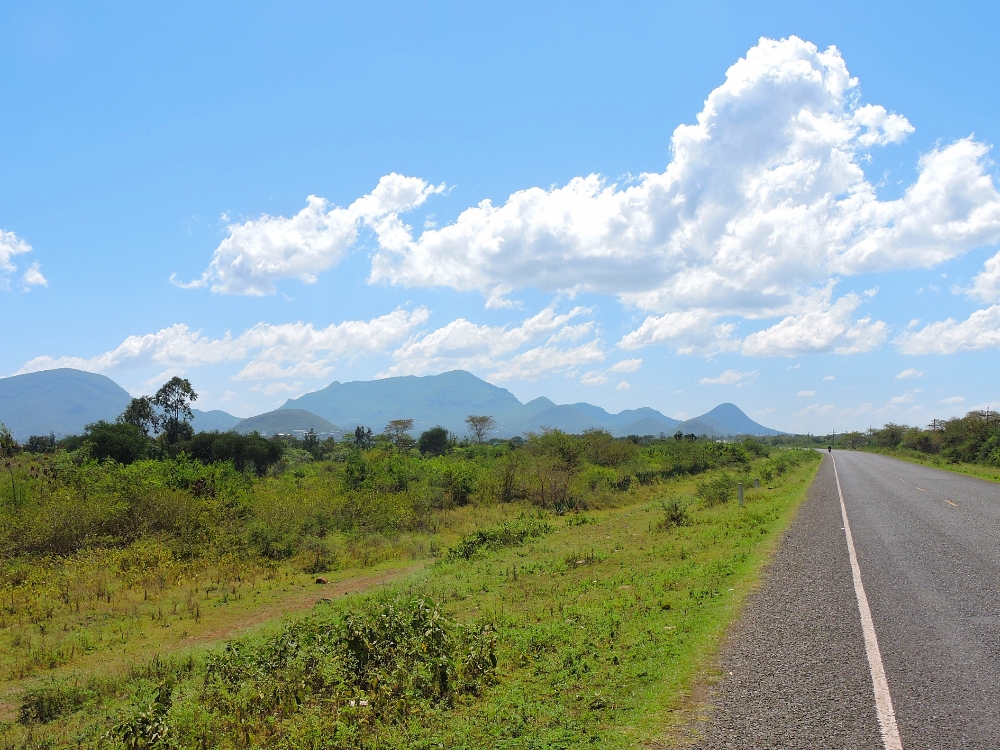
The towns in this area varied quite a bit in their level of attractiveness, but some of the nicer examples had a propensity for appearing where one might not expect them to be and that made the area a little more interesting for me. This part of the route also included portions of the eastern coastline of Lake Victoria. While nice vistas only came around occasionally, when they did they were appreciated, like this view from the fairly pleasant little town of Mbita.
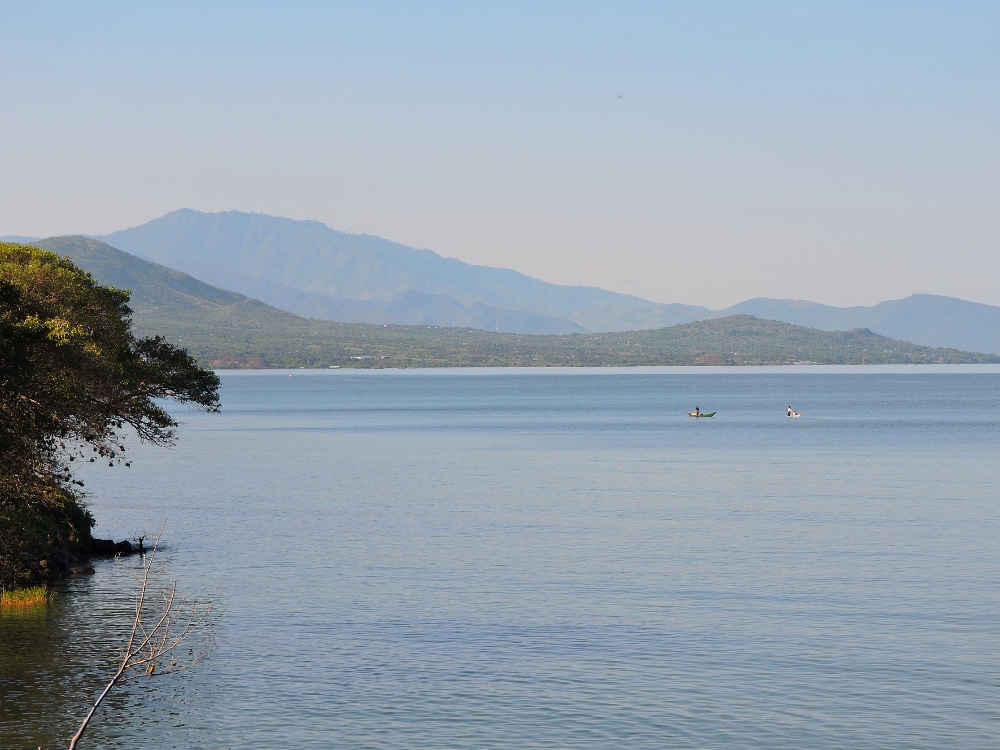
The second destination that caused my initially winding route was the Kakamega forest, an important birding site. Here I will relate the following anecdote relating to my visit there, because it demonstrates that that Touring-Induced Dementia (T.I.D.) is actually a thing, and even I am not immune from that particular affliction. The Kakamega forest is located about twenty kilometers east of a small city with the same name, along a road that has a rather poor-quality, rocky dirt surface for the final two-thirds of that distance. I intended to stay in the city, ride out to the forest as early as possible in the morning, see some great birds, and then ride back the same afternoon. I such situations I usually leave most of my gear in the room, but sometimes take along only one pannier, emptied of all but a few select items, such as a change of shoes, basic tools, and similar necessities. That was, once again, my plan on that occasion.
Waking extremely early proved difficult, but I managed to set off at a reasonably effective hour. Before long, I was moving along the rough section of the road, which was bumpier and dustier than I had expected, with a surprisingly heavy load of dust-cloud-creating motorbikes. Feeling annoyed because it seemed like it was taking longer than I had desired, when I heard a rather loud plonk
sound coming from behind me, just as I had negotiated a particularly bumpy rock, I declined to turn to investigate. Eventually, I arrived at the forest, still early enough that few people seemed to be around. After dismounting, my eyes instantly shot towards my rear rack, where my pannier should have been—but wasn’t. My first thought was, Oh no, that sound I heard was my bag flying off and hitting the ground!
My second thought compelled me to quickly ride back in the opposite direction, hopefully to retrieve my important belongings.
A large, black bag sitting in the middle of a dirt road should be easy to see, I hoped, so with luck I would find it quickly and have enough time to still try to see some birds. I could not remember exactly where I was when I heard the plonk sound but it felt like it had been a few kilometers back, nevertheless, I kept my eyes peeled during the entire route. Of course, it may have slid off into the roadside ditch, or worse, someone else might have carried it away, so I was not entirely confident that I would be able to locate it. For the first few kilometers: nothing. I continued a little further. Nothing. Additional distance. Still nothing. After passing the approximate halfway point of the dirt section, the nothingness persisted. Gradually, I slowly acclimated my mind to the reality that my bag and its contents were gone. By that point, I had almost covered the entire route back to Kakamega city and during the remainder of that distance my thoughts turned to all of the items I had lost, and what would be required to replace them. A substitute for my official Tour hat could be easily be found, but the original had significant sentimental value. A change of clothes did not, but finding replacements would be annoying for a tall person, like me. My moccasins were almost completely worn-out, but, similarly, my big feet would cause problems. My tools would be the biggest loss, especially painful since I have been carrying some of them during most of my earlier tours. The pannier itself couldn’t really be quickly replaced without taking extreme measures. I would need to improvise something.
Once I was back in town, I stopped by a very basic bike parts stand, but the only useful item I could buy there was another patch kit, though that probably was the most important thing to replace. Finally arriving back at the hotel, I carried the bike up the stairs, opened my door, and was greeted by the sight of both of my panniers sitting peacefully on the floor. Only a slight smile compensated for the overall feeling of exasperation. T.I.D. had caused me to leave without bringing any intended items with me, and, more ominously, caused me to forget certain knowledge that I had gained from previous experience—that if I had actually thrown off a pannier, the sound it made would have been much more violent and calamitous than the plonk
I had heard that morning. The following day I relocated a short distance to a place that would allow quicker access to the forest on the day after that, so I could try again. Mental faculties were more present on the second attempt, and, eventually, some nice birds were seen.
After that longer-than-expected stop, I continued my southeasterly route towards Nairobi, with another intermediate birding stop at Lake Nakuru National Park. With no real deadlines approaching, and with the particular spacing of the towns in this area, I covered this section using a few more days than I might otherwise have done. That was probably helpful, since there were two areas with additional elevation gain, the second of which peaked at two thousand five hundred meters, after a single climb of one thousand two hundred, one of the longest I had done since the first year of the Tour, and, once again, just shy of the high point for the entire Tour. I was not particularly looking forward to that one, since I had recently started feeling a little tired, and memories of struggling up small hills in the heat of Togo were still fresh, but the road was good and the temperature pleasant, so it proved to be of little trouble.
Nairobi was the first place where the land routes of my two Grand Tours crossed paths. That was never supposed to happen at all, but with the forced changes to my plans in 2020, there I was. My first ride into that particular mega-city occurred fifteen years earlier, and this time I was wondering how different the experience would be after that much time had passed. The first time I arrived from the north, and there was not really any choice of routes available to use. My memory of the particular day is a little faded by now, but I remember that the last thirty kilometers, or so, passed through a rather obnoxious zone of western-style sprawl, followed by a typically clogged urban zone. This time, when coming from the west, there appeared to be a handful of reasonable route options available. The one I chose was not too bad, or it would have been such, were it not for two ill-placed areas of road reconstruction. Once into the core of the city, my route was a little congested, but overall seemed reasonable. It did take me right past the African compound of the UN and UNESCO, and that would have been interesting to briefly visit. Unfortunately, it was hidden behind a huge concertina-topped wall, and patrolled by many armed guards, which seemed to counteract the organization’s stated purpose. The two days I spent in the city were generally unremarkable, but it was obvious that it had expanded considerably since my first visit. That was most apparent during my ride out of the city towards the east. Nominally, this was on exactly the same route I used previously, but of which I remembered few details. Certainly, it was much worse this time, especially due to another chaotic construction zone and a general increase in overall congestion. That was possibly the most annoying city exit that I can remember.
Continuing on, I set out for Mombasa, my final destination of the African section, and that part of the Kenyan route would be the less-appealing half that I alluded to above, so I was primarily interested in getting it over with. The good news was that the route steadily, more or less, lost one thousand seven hundred meters of elevation over its five hundred kilometer length. On the other hand, that benefit was largely outweighed by three other aspects that were distinctly unappealing. One of those was the condition of the road surface. Shoulders were present on all but around forty kilometers of that length, but they were frequently of substandard quality, in some areas possessing numerous shoulder-width speed bumps designed to prevent motor vehicles from using that lane. Additionally, Mombasa is Kenya’s second largest city, and East Africa’s largest port, and, with only one road connecting the city to the interior of the country, that meant only one thing—trucks—in excessively large numbers, not to mention plenty of busses and automobiles. They were a constant presence, and their endless overtaking maneuvers were an obnoxious harassment. In one area I witnessed the remnants of no less than four recent crashes that had involved trucks attempting overtaking in a unsafe manner.
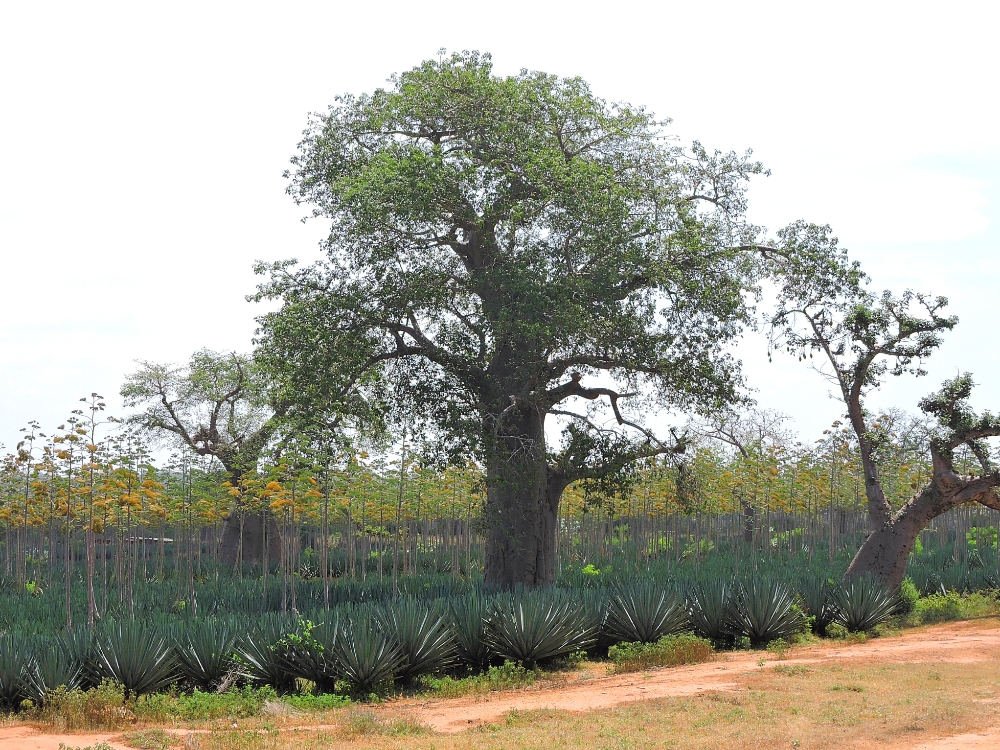
The final negative aspect was one that I knew would be a problem before I started that section, specifically, a change of climate. I had been gratefully enjoying the beautifully cooler days of the plateau for three months, but those days would soon come to an end. From past experience I knew that the nine hundred-meter mark above sea level is where a natural thermocline usually occurs, and, right on cue, when I dropped below that elevation oppressive heat quickly returned. It was a little drier than what I had recently experienced in other countries, but I still did not enjoy it. With all of those factors, this final section was definitely more tedious than enjoyable, but I managed. Keeping my daily distances below average helped, as did a short break at the town of Voi, which allowed me to spend a day birding in Tsavo East National Park.
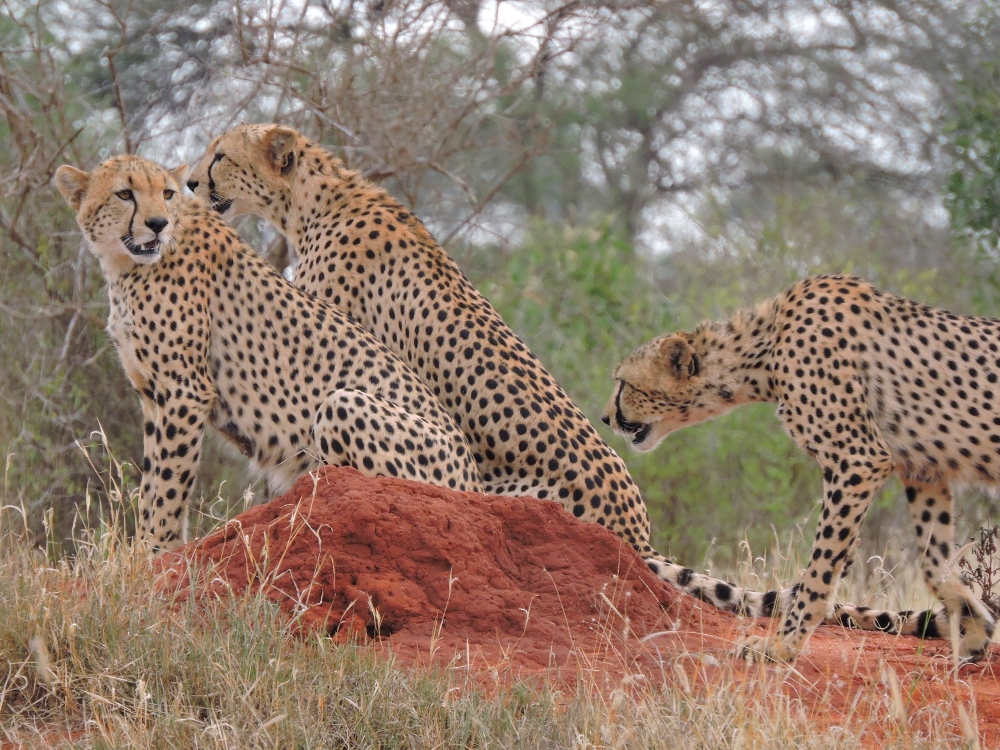
Despite those factors, I arrived at Mombasa without too much trouble, binging the unexpected African section of the World2 Tour to a close. Because I was starting to feel a little more tired than usual, I lingered around Mombasa and the coast for a little while, as a sort of vacation from the Tour, doing some sightseeing and a little birding that was only partially successful. I also needed to work out some sort of destination where I could move on to next, and with my ultimate end point still closed tight, that proved to be a big challenge once again. Working through the current travel policies and procedures caused me to wait around in Mombasa for much, much longer than I should have, and I am already paying the price of that long period of inactivity. Eventually, I had a new plan, but it would not be simple and would not really fit in with the spirit of the Tour. The first step would be a return to Nairobi, this time using the recently-opened railroad, built by China, where more red-tape, and more waiting, would be in store. After all of that was sorted, the situation would not significantly improve for a while longer, forcing me to atrophy still further. But that part of the story will be saved for another post.
